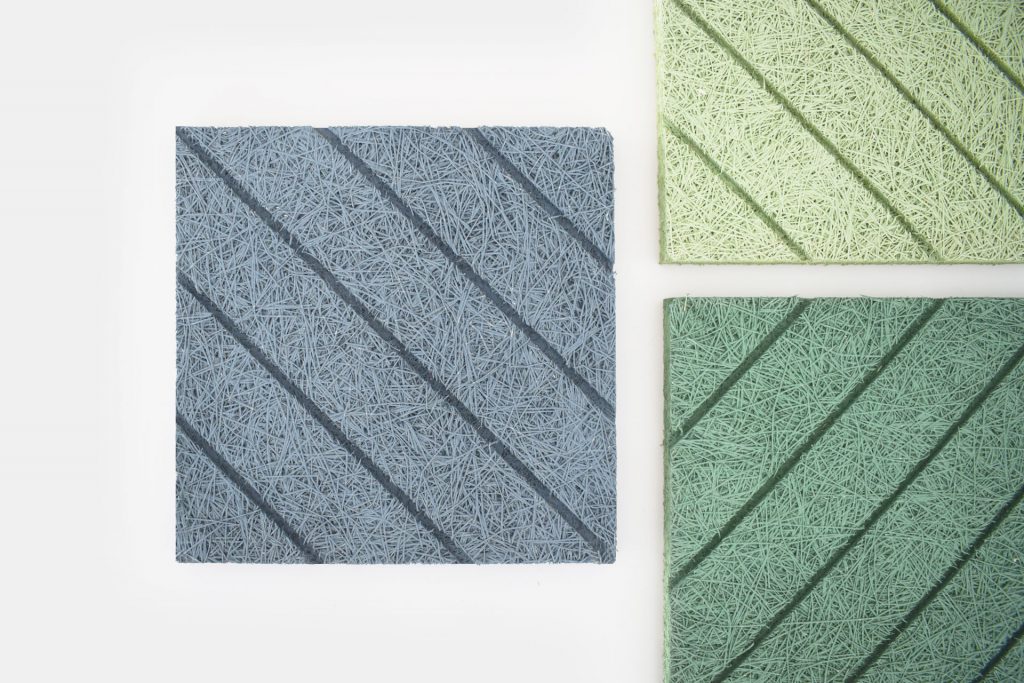
Merging Technology and Materials for Better Acoustics
The world of acoustic design is rapidly evolving, driven by technological advancements and sustainable materials. Parametric tools, which use algorithms and data to generate complex designs, are unlocking new possibilities in shaping how we manage sound. When paired with mineral wool, a proven material for noise reduction and insulation, these tools are creating innovative and sustainable solutions for acoustic challenges.
As we look to the future, the combination of parametric design and mineral wool is paving the way for more efficient, aesthetically pleasing, and environmentally conscious acoustic solutions. This blog explores how these two forces are revolutionizing the field of acoustic design.

How Parametric Tools Are Transforming Acoustic Design
Parametric tools bring computational precision and creativity to acoustic design, allowing architects and engineers to optimize spaces like never before.
Enhanced Acoustic Modeling
Parametric tools enable designers to create highly detailed acoustic models that predict sound behavior in a given space. These tools can analyze factors such as reverberation time, sound diffusion, and noise absorption, ensuring that every design element contributes to optimal acoustics.
For example, by using parametric simulations, designers can position mineral wool panels precisely where they will have the greatest impact. This not only improves sound quality but also reduces material waste by ensuring efficient use of resources.
Customization and Aesthetics
One of the most significant advantages of parametric tools is their ability to create bespoke designs. These tools can generate intricate patterns and forms that blend seamlessly with the aesthetic goals of a space. When combined with mineral wool, these designs can include acoustic panels that are both functional and visually striking.
In cultural spaces like theaters and concert halls, parametric tools allow for the creation of stunning acoustic installations that enhance both sound and design. This fusion of art and engineering is setting a new standard for how acoustic solutions can elevate architectural spaces.
Streamlining the Design Process
By automating calculations and testing multiple iterations quickly, parametric tools streamline the design process. Designers can experiment with various configurations and materials, including mineral wool, to find the perfect balance between performance, cost, and sustainability. This efficiency saves time and resources while ensuring superior acoustic outcomes.

Innovations in Acoustic Design: Parametric Tools and Mineral Wool in Action
The integration of parametric tools and mineral wool is driving innovation in acoustic design. Here’s how these two elements are being used to create transformative solutions:
Advanced Soundproofing in Urban Spaces
Urban environments present unique acoustic challenges, from traffic noise to densely populated buildings. Parametric tools allow designers to model these complexities accurately and integrate mineral wool panels into facades, walls, and ceilings to reduce noise pollution effectively.
Creative Acoustic Installations in Public Spaces
Public spaces like museums and libraries require both functionality and aesthetic appeal. Parametric tools enable the creation of visually stunning installations made from mineral wool, which enhance acoustics while serving as design focal points. These installations demonstrate how art and functionality can coexist harmoniously.
Practical Tips for Incorporating Parametric Tools and Mineral Wool
For architects, designers, and developers looking to harness the power of parametric tools and mineral wool, here are some practical tips:
Start with Acoustic Modeling: Use parametric tools to simulate sound behavior and identify problem areas before starting the design process.
Focus on Sustainability: Choose mineral wool panels made from recycled materials to align with green building standards.
Experiment with Aesthetics: Leverage the design flexibility of parametric tools to create panels that enhance the visual appeal of your space.
Collaborate with Experts: Work with experienced acoustic engineers and designers to ensure the best results.
Prioritize Multifunctionality: Take advantage of mineral wool’s thermal and fire-resistant properties to address multiple performance needs.

The Future Sounds Better with Parametric Tools and Mineral Wool
The combination of parametric tools and mineral wool is revolutionizing acoustic design, offering a future where spaces are quieter, more sustainable, and visually inspiring. These innovations address the growing need for solutions that prioritize both functionality and aesthetics, ensuring that acoustic performance doesn’t come at the expense of design or the environment.
As architects and designers continue to push the boundaries of what’s possible, parametric tools and mineral wool will remain at the forefront of this evolution. Together, they are setting a new standard for how we think about soundproofing and acoustic design in the 21st century.
Explore the possibilities of parametric tools and mineral wool today and take the first step toward building quieter, greener, and more innovative spaces.
References
Parametric Tools in Architecture – Learn how parametric design is reshaping building processes: Parametric Design Innovations
Mineral Wool Properties – Explore the benefits of mineral wool for soundproofing: Mineral Wool Guide
Sustainable Acoustic Solutions – Discover eco-friendly materials for noise reduction: Green Building Acoustics
Advanced Acoustic Modeling – How parametric tools improve sound design: Acoustic Modeling Insights
Retrofitting with Mineral Wool – Strategies for improving older buildings: Retrofitting Guide
Share